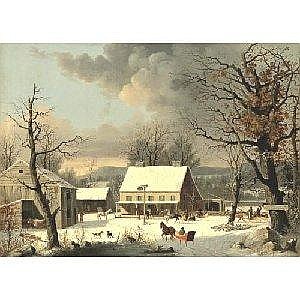
NEMA session SEE/Change: Seeing change in How to Offer Online Museum Content to Schools.
Hosted by David Rau, Director of Education and Outreach at the Florence Griswold Museum in Lyme, CT, the SEE/Change session at NEMA introduced a prototype of online curriculum centered upon one work of art; George H. Durie’s 7 Miles to Farmington. Using this mid-19th century American piece as the source of content, the session was set up as a panel and included speakers such as Clarissa Cleglio, the Assistant Professor of Digital Humanities at UCONN, Leslie Evans, Director and Curator of the Avery-Copp House, and Caitlin Monahan the Managing director of Jul/Julia Balfour, LLC, to name a few. The panel discussed their collaborative efforts to build this website, touching on both positive and challenging aspects of the project.
These individuals, worked collaboratively on this online project with the aim of bringing museum-quality content to the classroom and the home through an easy, accessible online outlet. the project involved consultation and development with a graphic design team, digital media and visitor experience specialists, curators, etc. The project was aimed at increasing accessibility to art and history in schools and at home; and a website acts as an excellent platform to do so. This website is unique from other museum websites, because it is centered upon one object and not an entire collection or a bunch of object. Durie’s painting drives the entire site and its content.
The project was prototyped using elementary school students in Connecticut, and the design team was able to ascertain that students enjoyed the inquisitiveness of Visual Thinking Strategy (VTS) throughout the site’s content to discuss activities going on in the painting, the time of year and the historical context of the painting. Students enjoyed zooming in on aspects of the painting and attempting to figure out what was going on. The audience also seemed to like video portions of the site that dug deeper into mid-19th century New England life through footage that documented activities such as the means to make pounded cheese. This prototyping and evaluation also allowed the design team to test the usefulness and usability of the site’s features, such as presentation, and buttons that zoom in or give more information.
The vastness and depth of possibilities for curriculum surrounding one object speaks to the endless amounts of options our museums hold for object- based learning. Objects tell stories and they are tools that help uncover the past. If an entire website, curriculum plan, set of videos, and activities can be launched around one painting, think of the infinite possibilities that stretch before museums that house entire collections.




